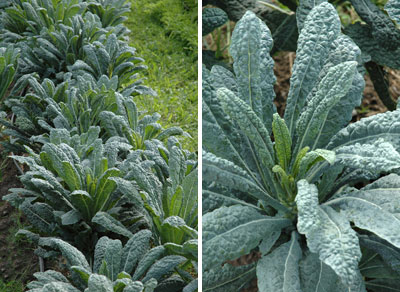Plant of the Month – September, 2010

Brassica oleracea ‘Lacinato’. All photos by Jimmy Turner.
Brassica oleracea ‘Lacinato’
It’s commonly called Cavolo nero, black kale, Tuscan kale, and dinosaur kale
This month I thought I’d bring you something a little different. While planting my autumn vegetable garden last weekend, I faced a dilemma: Do I plant the ‘Lacinato’ (black kale) in the vegetable garden or in a container? It’s a delicious vegetable on its own, yet it is also absolutely beautiful in mixed containers. Deep, dark blue-green, strap-like leaves fountain out to 18 inches across and reach 2 feet in height.
This variety, like all ornamental and edible kales, is best planted from now until late October in full sun. Black kale is also one of the most cold-tolerant kales, so don’t worry about it freezing during winter. It partners well with pansies or violas, or you can plant it in the vegetable garden with your cabbage, broccoli and other winter vegetables.
Black kale originated in Tuscany in the 18th century and is still around, most likely because it is both beautiful and tasty. For a quick recipe, remove the center ribs from the leaves, then blanch them for a few minutes. Let the leaves cool, squeeze out the excess water, and sauté with garlic and olive oil.
Oh, in case you’re curious, I settled my dilemma by making a compromise. I planted the kale in a container with curly parsley. That way I get the best of both worlds — ornamental and edible!
About the author: Jimmy Turner is the senior director of gardens at the Dallas Arboretum. Visit www.dallasplanttrials.org for more information on his trials.

